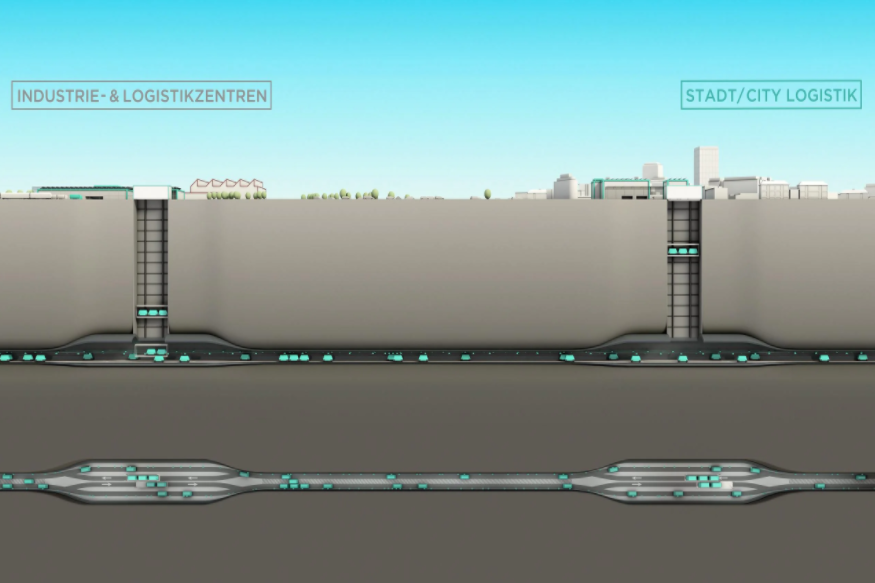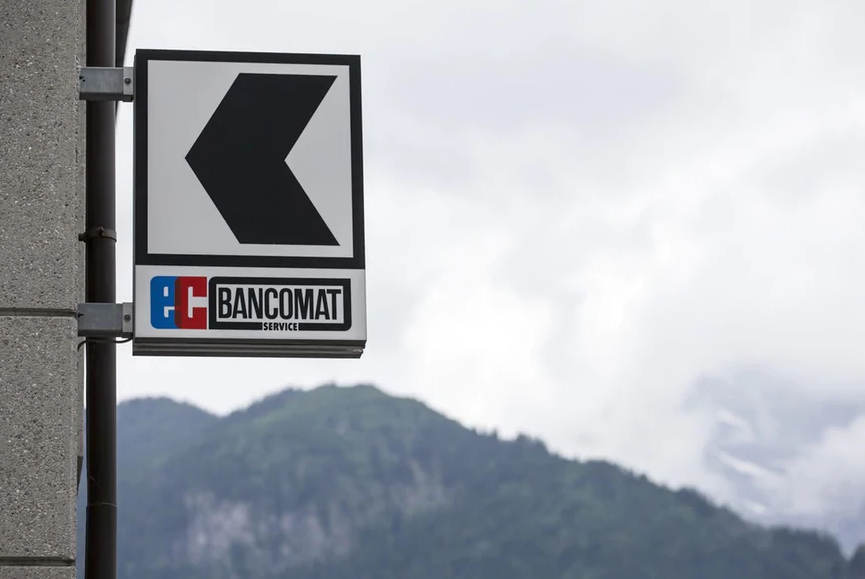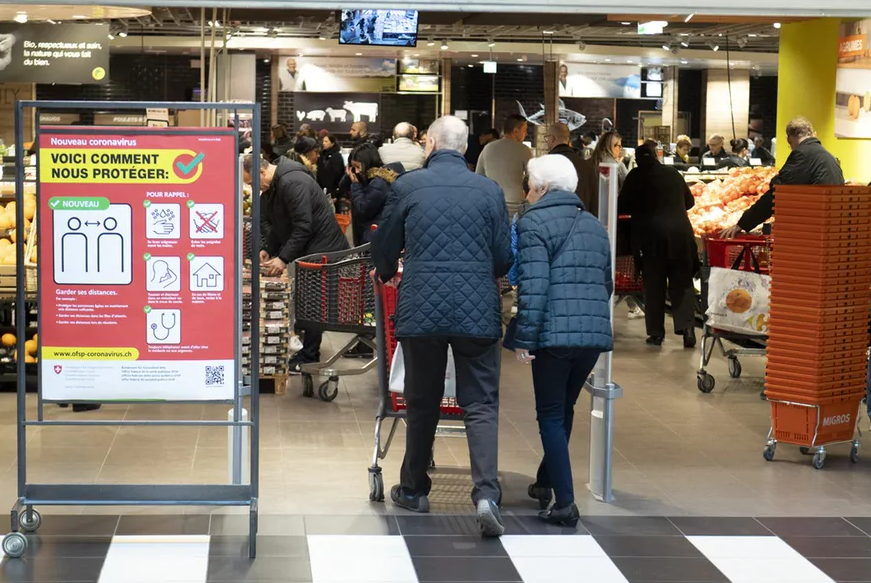A computer image of the planned underground logistics network. Cargo sous terrain Goods that are normally trucked on busy Swiss roads are a step closer to travelling underground on driverless vehicles after an ambitious cargo project got a first legislative go-ahead. Born in London, Simon is a multimedia journalist who has worked for www.swissinfo.ch since 2006. He speaks French, German and Spanish and covers the United Nations and other international organisations in Geneva, and a wide range of issues mainly in French-speaking Switzerland. More from this author | English Department The Cargo sous terrain (CST) project sounds like science fiction: a 500-kilometre network of tunnels to transport freight between Switzerland’s busiest cities. But after years
Topics:
Swissinfo considers the following as important: 3.) Swissinfo Business and Economy, 3) Swiss Markets and News, Business, Featured, newsletter
This could be interesting, too:
Nachrichten Ticker - www.finanzen.ch writes Die Performance der Kryptowährungen in KW 9: Das hat sich bei Bitcoin, Ether & Co. getan
Nachrichten Ticker - www.finanzen.ch writes Wer verbirgt sich hinter der Ethereum-Technologie?
Martin Hartmann writes Eine Analyse nach den Lehren von Milton Friedman
Marc Chandler writes March 2025 Monthly
Goods that are normally trucked on busy Swiss roads are a step closer to travelling underground on driverless vehicles after an ambitious cargo project got a first legislative go-ahead.
The Cargo sous terrain (CST) project sounds like science fiction: a 500-kilometre network of tunnels to transport freight between Switzerland’s busiest cities.
But after years of planning, momentum is building. On Tuesday, the Swiss Senate gave the green-light to proposed legislation that would oversee the futuristic venture. The law now passes to the House of Representatives for consideration.
The Federal Law on Underground Goods TransportExternal link represents a crucial milestone, according to CST, a Swiss private-sector initiative that proposed the legislation.
“The law is the basis for carrying out the whole project,” Peter Sutterlüti, chairman of CST’s board of directors, told Swiss public television SRF.
“The project needs investment security. It needs to be enshrined in law so that we can start drilling underground in accordance with federal procedures.”
If they get the final approval from parliament, CST’s planners will be able to follow a single building and planning process and thus avoid having to negotiate access and construction issues with each canton and commune along the route.
How does it work?
Cargo sous terrain AG, based in Olten, first presented their vision to connect production and logistics sites with Swiss urban centres ten years ago.
The idea is to automatically load pallets or modified refrigerated containers of goods onto electric driverless vehicles at designated “hubs”. The containers are then transferred underground on lifts and onto tracks. The autonomous vehicles carrying the cargo then travel at a constant speed of 30 kilometres per hour to their destination, where the goods are removed and distributed locally.
The completed network should be ready by around 2045 at a total cost of CHF30-35 billion.
Organisers claim the underground network will dramatically improve transport infrastructure in Switzerland and offer a sustainable and environmentally-friendly solution.
Too expensive?
But critics question the project’s price tag and necessity.
“It is far too expensive,” said Nils Planzer, CEO and chairman of Planzer Transport, one of Switzerland’s leading logistics firms.
He questions the future profitability of new underground infrastructure in the highly competitive logistics market where prices are low.
“Today we have existing infrastructure that, in my opinion, should be used to its full extent first,” he told SRF.
The audacious project comes with plenty of uncertainties. During its consultation phase concerns were raised about the final budget mushrooming and of the public being asked to foot any bills.
This week senators in Bern voted unanimously for the project. But there were questions about the shareholders, the financing and compensation to landowners.
“It is essential that the majority of the shareholders remain in Swiss hands. It is imperative that the strategic infrastructure be protected from foreign takeovers,” said Hansjörg Knecht of the conservative right Swiss People’s Party.
He insisted that competition in the freight business should remain fair and that the project is financed exclusively by the private sector.
Knecht said: “No state funds may be used, not even through the back door… the participation of state-owned and state-affiliated companies must be carefully examined. It must not be the case that, if the project fails, the state, as the owner of these companies, ends up being asked to pay.”
Construction plans
In a pilot phase, CST wants to build a stretch of tunnel between Härkingen, an industrial area with warehousing and distribution facilities, and Zurich, Switzerland’s largest city. Stretching over 67 kilometres, this tunnel would run 20 to 100 metres underground, have about ten trans-shipment hubs and would cost about CHF3.4 billion ($3.7 billion) according to CST estimates. It should be up and running by 2031.
In a second phase, if all things go to plan, the network will be extended along the east-west axis, from St Gallen to Geneva, linking the cities of Basel, Bern, Lucerne, Lausanne and Thun and extending over 500 kilometres.
Around CHF100 million has already been secured for the planning stage leading up to the start of construction work in 2026. Project development is moving ahead while the team waits for a final decision on the federal law before parliament. Nine people are working in Olten on detailed route management and are in negotiations with the potential hub locations.
Who’s behind the project?
The project is backed by several heavyweights in Switzerland’s business world. Investors include Credit Suisse, Swiss Railways Cargo, Zurich Airport, Swisscom, Swiss Post, insurance firms Helvetia and Mobiliar, Holcim, Implenia, and the Coop and Migros supermarket chains.
The Federal Council (Swiss executive branch) says it will facilitate the “realistic” private venture and that the new law will help them do so. But the government will not participate in its financing. It also insists that most shareholders should be Swiss during the project’s lifetime, as there had been earlier interest from Chinese investors.
Many senators spoke positively about the underground cargo scheme this week.
“It is rare that we get to discuss such innovative projects in parliament. Visionary ideas tend to be suppressed in this house,” said Stefan Engler of the Centre Party.
Centre-right Radical parliamentarian Hans Wicki said the project came at the right time.
“Goods transport will grow strongly, due to an increase in the Swiss population and growing economy,” he told the Senate on Tuesday.
The Swiss Federal Roads Office estimates that goods transport in Switzerland will rise by 40% between 2010-2030 impacting already congested roads, noise and pollution in the densely populated country.
Tags: Business,Featured,newsletter










